How HBOT Can Help Diabetics?
Hyperbaric Oxygen Therapy (HBOT) involves a 90-minute treatment session in a chamber filled with pure oxygen at a pressure that is two to three times higher than atmospheric pressure.
This elevated pressure allows for a significant increase in oxygen delivery to all tissues and cells within the body, including areas where hemoglobin is unable to transport sufficient oxygen due to medical conditions.
HBOT process facilitates the direct dissolution of oxygen into the plasma, bypassing the usual reliance on red blood cells for oxygen transport.
Struggling with persistent diabetic wounds? Learn how HBOT can help diabetics by improving oxygen delivery and promoting faster healing.
Before discussing the effectiveness of HBOT in treating diabetic foot wounds and ulcers, it is important to address a fundamental question: “Why do foot wounds and ulcers in diabetic patients not heal in the same manner as those in individuals without diabetes?”
The Challenge of Foot Wounds and Ulcers in Diabetic Patients
How HBOT can help diabetics goes beyond wound care—it enhances blood circulation, reduces inflammation, and supports tissue regeneration. Here are the primary reasons why wounds and ulcers do not heal effectively in individuals with diabetes:
High Blood Glucose Levels
Individuals with diabetes experience elevated glucose levels in their blood due to the body’s decreased insulin production. Insulin is essential for facilitating the absorption of glucose into the body’s cells to support daily functions.
Elevated glucose levels cause internal damage, leading to narrowed blood vessels, stiffened arteries, and damage to the nervous system, particularly in the limbs. This increases the risk of injury and delays the healing process.
Diabetic Neuropathy
In diabetic individuals, high glucose levels lead to damage to the nervous system. The damaged nerves do not regenerate as they would in healthy individuals, reducing sensitivity to pain.
Consequently, individuals may not notice when they are injured, complicating the detection and treatment of wounds.
The lack of nerve regeneration further impedes healing, emphasizing the importance of protective measures such as wearing gloves or shoes to prevent injuries. Regular inspection of limbs for signs of blisters, injuries, or ulcers is crucial.
Problems with Blood Circulation
Elevated sugar levels hinder proper blood circulation throughout the body, including areas affected by injuries. Efficient circulation and oxygen delivery by red blood cells are vital for wound healing, as is the role of white blood cells in combating infection. Poor circulation can lead to inadequate healing and persistent infection.
Ineffective Immune System
High sugar levels disrupt the production of enzymes and hormones, weakening the immune system. This impairment makes it challenging for the body to heal injuries or ulcers, allowing infections to proliferate unchecked.
Increased Inflammation
While inflammation is a necessary phase in the wound-healing process, in diabetic individuals, this stage can be prolonged, leading to chronic injuries.
Persistent inflammation disrupts the balance between the production and degradation of collagen, essential for wound repair, thus hindering the healing process.
HBOT: A Critical Tool in the Healing of Diabetic Wounds
Hyperbaric Oxygen Therapy (HBOT) saturates red blood cells with a greater-than-normal amount of oxygen. Under normal atmospheric conditions, the air contains approximately 20-21% oxygen.
However, in an HBOT chamber, an individual breathes 100% oxygen at pressures more than double that of the standard atmospheric pressure.
This elevated pressure leads to five times more oxygen being dissolved in the blood and plasma, which is then transported to the site of injury. As a result, the increased oxygen delivery to the injured area facilitates the healing process.
HBOT plays a crucial role in the repair of damaged blood vessels and stimulates the formation of new blood vessels, a process known as angiogenesis. This enhanced vascular growth allows for increased circulation of blood, enriched with pure oxygen, throughout the body, aiding in the recovery from injuries or other damage.
HBOT therapy promotes the generation of collagen, an essential protein for wound healing. The growth of collagen under the influence of HBOT supports the closure and healing of wounds.
The increased pressure experienced within the HBOT chamber also contributes to a reduction in swelling at the injury site, which in turn improves blood circulation and further supports the healing process.
What Current Studies Reveal About HBOT in Diabetic Patients
Over the past two decades, numerous controlled and uncontrolled studies have been conducted on individuals with diabetes who suffer from foot ulcers and wounds. Initially, the evidence was limited but promising. As the years progressed, more rigorous controlled studies were undertaken, yielding significant findings:
Among diabetic individuals receiving conventional wound healing treatments, there was no evidence of recovery observed even after one month. However, after participating in Hyperbaric Oxygen Therapy (HBOT) for the same duration, 66% of the subjects experienced healing of their wounds.
HBOT has been shown to reduce the need for surgical interventions. Typically, when wounds fail to heal, medical professionals might recommend procedures such as skin grafting, skin flaps, or amputation.
After undergoing HBOT, only 16% of the cases required surgical intervention, compared to 100% among those who did not receive HBOT.
Furthermore, in situations involving severe amputations, the rate dramatically decreased to 8% from an initial 82%.
While HBOT sessions might be more expensive compared to other conventional treatments—often necessitating several sessions weekly over a few months—the benefits substantially outweigh the potential consequences of not using such therapy. The financial cost is considerably less severe than the potential loss of a limb.
Studies show how HBOT can help diabetics by reducing amputation rates and offering an effective, non-invasive solution for non-healing foot ulcers.
This therapy involves no medication. it simply requires the patient to breathe in pure oxygen, making it a compelling choice for those facing severe diabetic wound complications.
Summary
A diabetic foot ulcer is a common issue for people with diabetes. It happens when uneven blood sugar levels impact blood flow in the feet, making wounds heal slowly. Doctors often recommend keeping blood sugar under control and may also suggest using Hyperbaric Oxygen Therapy (HBOT) for serious cases.
The FDA supports the use of HBOT for wounds that don’t heal well, like diabetic foot ulcers. In this treatment, a person goes into a special pressurized room and breathes in nearly pure oxygen. This process increases the oxygen in the blood, which helps get more oxygen to the wound and aids in healing faster.
Read More: HBOT Treatment for Long COVID: A Potential Solution for Recovery
Read More: The Role of HBOT in Speeding Up Stroke Recovery
Read More: Using Hyperbaric Oxygen Therapy to Treat Delayed Radiation Injuries
Read More: How HBOT for Viral Infections Helps in Recovery?
Read More: HBOT for Depression: The Impact of HBOT on Mental Health
Read More: HBOT for Cancer Patients: A Supportive Therapy for Cancer
Read More: Using HBOT for Autism Spectrum Disorder




